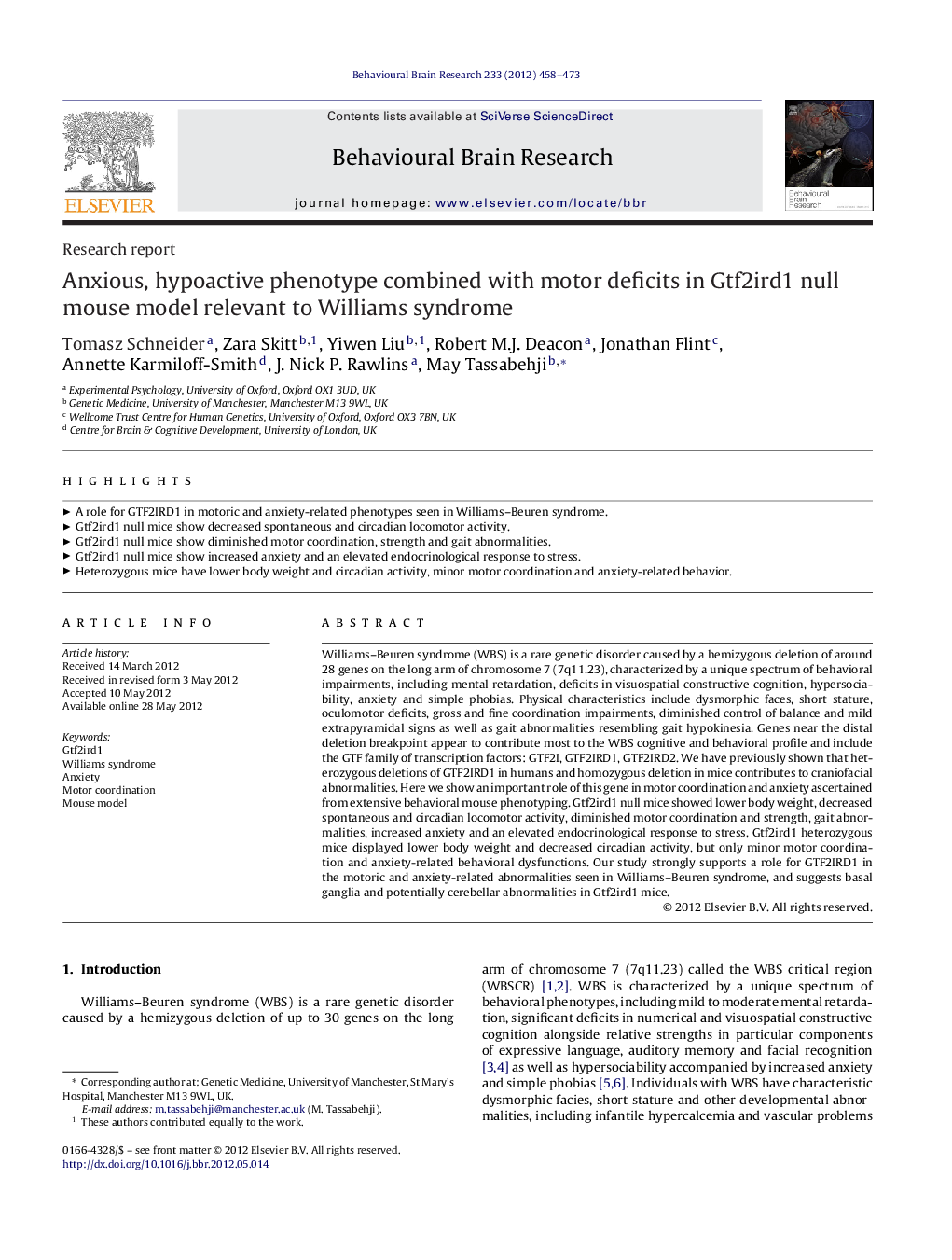| کد مقاله | کد نشریه | سال انتشار | مقاله انگلیسی | نسخه تمام متن |
|---|---|---|---|---|
| 4313155 | 1289986 | 2012 | 16 صفحه PDF | دانلود رایگان |

Williams–Beuren syndrome (WBS) is a rare genetic disorder caused by a hemizygous deletion of around 28 genes on the long arm of chromosome 7 (7q11.23), characterized by a unique spectrum of behavioral impairments, including mental retardation, deficits in visuospatial constructive cognition, hypersociability, anxiety and simple phobias. Physical characteristics include dysmorphic faces, short stature, oculomotor deficits, gross and fine coordination impairments, diminished control of balance and mild extrapyramidal signs as well as gait abnormalities resembling gait hypokinesia. Genes near the distal deletion breakpoint appear to contribute most to the WBS cognitive and behavioral profile and include the GTF family of transcription factors: GTF2I, GTF2IRD1, GTF2IRD2. We have previously shown that heterozygous deletions of GTF2IRD1 in humans and homozygous deletion in mice contributes to craniofacial abnormalities. Here we show an important role of this gene in motor coordination and anxiety ascertained from extensive behavioral mouse phenotyping. Gtf2ird1 null mice showed lower body weight, decreased spontaneous and circadian locomotor activity, diminished motor coordination and strength, gait abnormalities, increased anxiety and an elevated endocrinological response to stress. Gtf2ird1 heterozygous mice displayed lower body weight and decreased circadian activity, but only minor motor coordination and anxiety-related behavioral dysfunctions. Our study strongly supports a role for GTF2IRD1 in the motoric and anxiety-related abnormalities seen in Williams–Beuren syndrome, and suggests basal ganglia and potentially cerebellar abnormalities in Gtf2ird1 mice.
► A role for GTF2IRD1 in motoric and anxiety-related phenotypes seen in Williams–Beuren syndrome.
► Gtf2ird1 null mice show decreased spontaneous and circadian locomotor activity.
► Gtf2ird1 null mice show diminished motor coordination, strength and gait abnormalities.
► Gtf2ird1 null mice show increased anxiety and an elevated endocrinological response to stress.
► Heterozygous mice have lower body weight and circadian activity, minor motor coordination and anxiety-related behavior.
Journal: Behavioural Brain Research - Volume 233, Issue 2, 1 August 2012, Pages 458–473